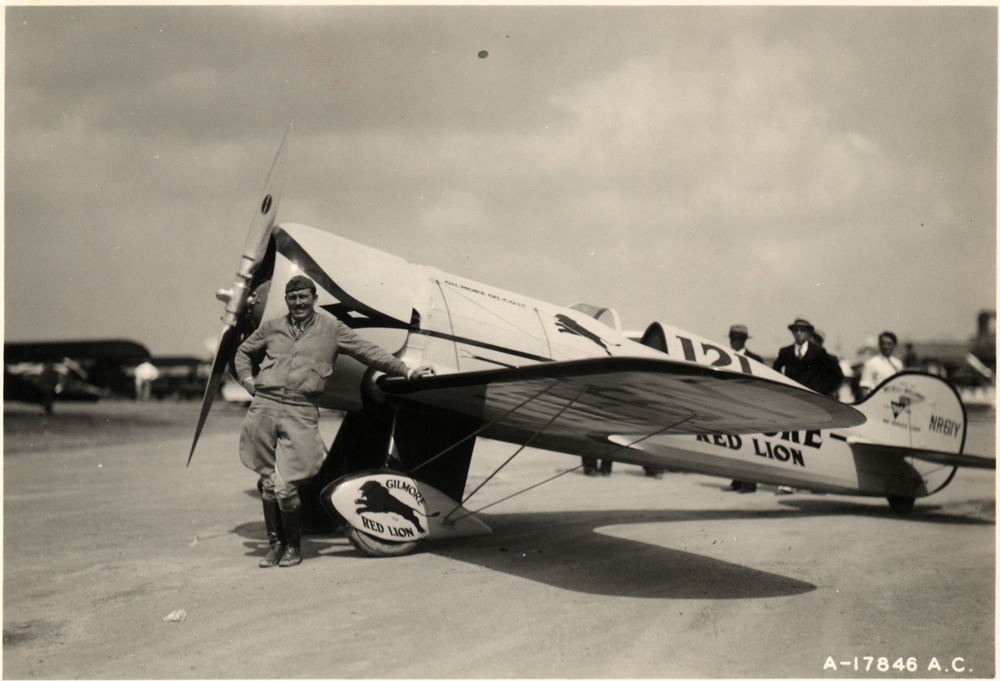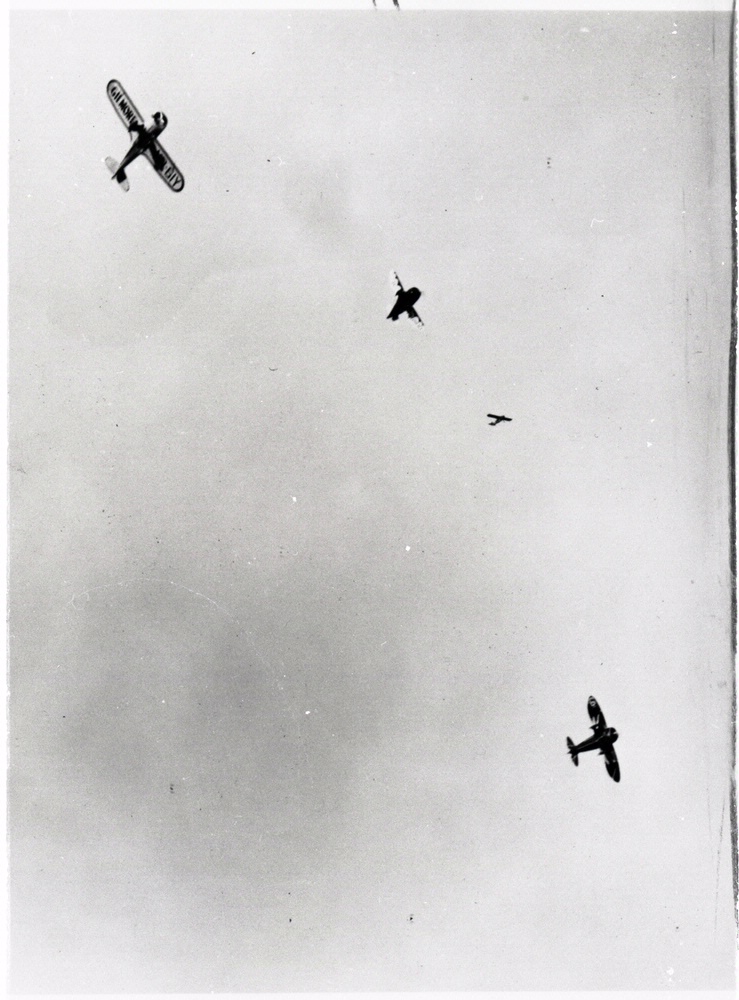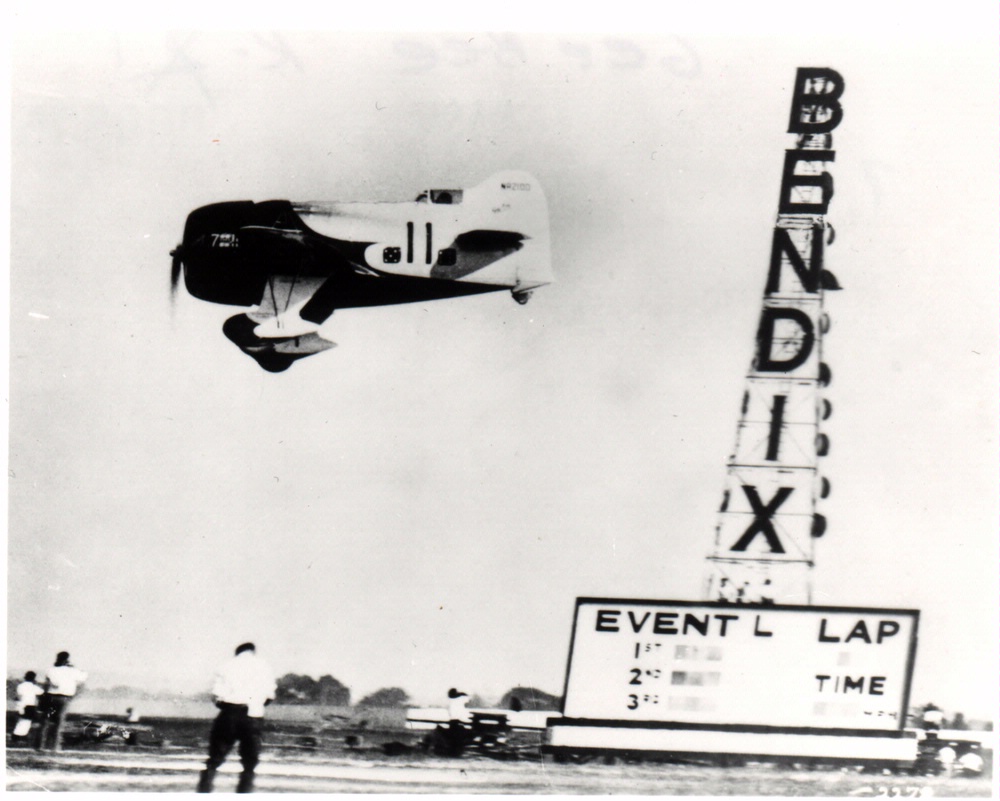
Celebrating Labor Day with the Thompson Trophy
Sep 07, 2015
By Elizabeth Borja
Labor Day became a national holiday in the United States in 1894, codifying what had become an American tradition of celebrating the work of labor unions with parades, picnics, and other festivities. During the 1920s and 1930s, the National Air Races were also becoming a Labor Day tradition, often held in Cleveland, Ohio.
 Front cover of a brochure for the 1932 National Air Races held at Cleveland Municipal Airport, Cleveland, Ohio. Photo ID: NASM 99-42652, National Air and Space Museum Archives
Front cover of a brochure for the 1932 National Air Races held at Cleveland Municipal Airport, Cleveland, Ohio. Photo ID: NASM 99-42652, National Air and Space Museum Archives
Labor Day 1932 fell on September 5. An estimated 55,000 spectators gathered to view the final and, to many, most exciting event at the National Air Races—the Thompson Trophy Race. The race was a free-for-all in which contestants began at the same starting line and raced at low-altitude, breakneck speeds for 10 laps around pylons in a 16-kilometer (10-mile) closed circuit.
 Col. Roscoe Turner poses with his Wedell-Williams Model 44 (44 III) "Gilmore - Red Lion" racer. Photo ID: NASM A-580-A, National Air and Space Museum Archives
Col. Roscoe Turner poses with his Wedell-Williams Model 44 (44 III) "Gilmore - Red Lion" racer. Photo ID: NASM A-580-A, National Air and Space Museum Archives
The 1932 race was packed with proven winners and competitors. James Haizlip, in a Wedell-Williams aircraft, had just won the 1932 Bendix Trophy race, a transcontinental speed dash from Burbank to Cleveland, breaking the existing transcontinental speed record with an additional flight to New York. The man who had set that record in winning the Bendix the year before was also competing—James “Jimmy” Doolittle. Roscoe Turner, flying a Wedell-Williams, had finished third in the 1932 Bendix and second in the 1931 Thompson. Lee Gehlbach had won the 1930 All-American Flying Derby. James Wedell, flying a Wedell-Williams, was one of the “Wedells” of “Wedell-Williams.” Bob Hall, flying his own design, had designed the Gee Bee racer that was the predecessor to Doolittle’s and Gehlbach’s aircraft.
 James "Jimmy" Doolittle poses beside his Granville (Gee Bee) R-1 Racer. Photo ID: NASM 77-11856, National Air and Space Museum Archives
James "Jimmy" Doolittle poses beside his Granville (Gee Bee) R-1 Racer. Photo ID: NASM 77-11856, National Air and Space Museum Archives
From the beginning of the race, Jimmy Doolittle's Gee Bee, set the pace. He had broken the land plane speed record with an average of 473 kilometers (294.39 miles) per hour just days before, though that had been recorded on a straight track. The Gee Bee was a notoriously difficult plane to fly, but leaving a trail of black smoke, Doolittle lapped almost all of the other competitors.
 Three racers making a turn during the 1932 Thompson Trophy Race, September 5. At top left is the Wedell-Williams Model 44 piloted by Roscoe Turner (3rd place); at top center is the Granville (Gee Bee) R-1 piloted by James "Jimmy" Doolittle (1st place); and at bottom right is the Hall Bulldog, piloted by Bob Hall (6th place). Small aircraft at right center in distant background is unidentified. Photo ID: NASM 9A06240, National Air and Space Museum Archives
Three racers making a turn during the 1932 Thompson Trophy Race, September 5. At top left is the Wedell-Williams Model 44 piloted by Roscoe Turner (3rd place); at top center is the Granville (Gee Bee) R-1 piloted by James "Jimmy" Doolittle (1st place); and at bottom right is the Hall Bulldog, piloted by Bob Hall (6th place). Small aircraft at right center in distant background is unidentified. Photo ID: NASM 9A06240, National Air and Space Museum Archives
Doolittle won the Thompson Trophy with a total elapsed time of 23:44.69. Over the flight, he averaged 407 kilometers (252.686 miles) per hour, 16 kilometers (10 miles) per hour more than second place finisher Wedell.
 Jimmy Doolittle passes the Bendix pylon during the 1932 Thompson Trophy race. Photo ID: NASM 89-5925, National Air and Space Museum Archives
Jimmy Doolittle passes the Bendix pylon during the 1932 Thompson Trophy race. Photo ID: NASM 89-5925, National Air and Space Museum Archives
Doolittle retired from air racing soon after the competition. He had won three of the biggest awards given in the sport—the Thompson, Bendix, and Schneider Trophies. And in a little over a decade, he was to earn the highest military award—a Medal of Honor.
 Thompson Trophy plaque awarded to Jimmy Doolittle in 1932. The plaque is currently on display in the Pioneers of Flight gallery at the National Air and Space Museum in Washington, DC. Photo: Eric Long, NASM 2014-04799
Thompson Trophy plaque awarded to Jimmy Doolittle in 1932. The plaque is currently on display in the Pioneers of Flight gallery at the National Air and Space Museum in Washington, DC. Photo: Eric Long, NASM 2014-04799
The air show is still a Labor Day tradition in Cleveland. Enjoy your own celebrations and Labor Day traditions!
Related Topics

We rely on the generous support of donors, sponsors, members, and other benefactors to share the history and impact of aviation and spaceflight, educate the public, and inspire future generations. With your help, we can continue to preserve and safeguard the world’s most comprehensive collection of artifacts representing the great achievements of flight and space exploration.
Support the Museum
We rely on the generous support of donors, sponsors, members, and other benefactors to share the history and impact of aviation and spaceflight, educate the public, and inspire future generations. With your help, we can continue to preserve and safeguard the world’s most comprehensive collection of artifacts representing the great achievements of flight and space exploration.



